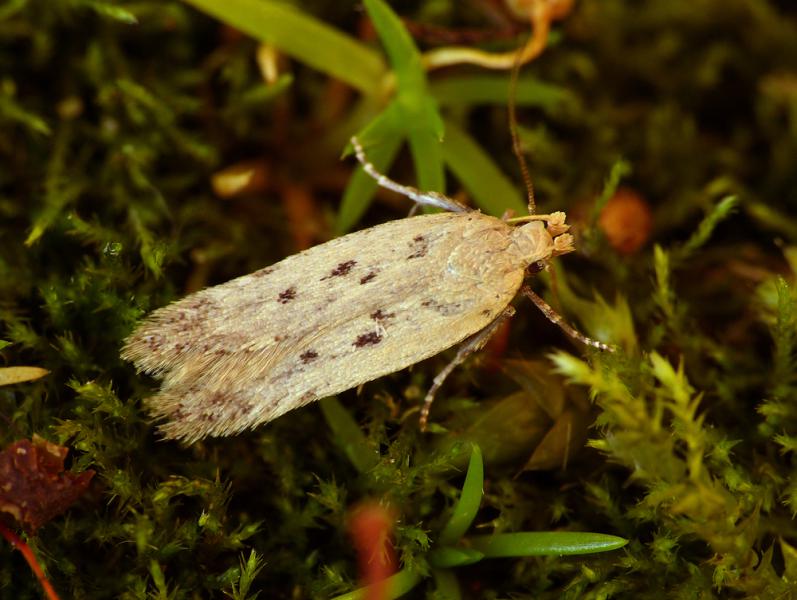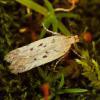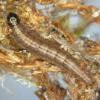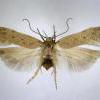35.041 Bryotropha desertella (Douglas, 1850)
Status and Distribution
Local to very local, in larger sandy coastal areas throughout much of the British Isles. Rare in northern Scotland occuring as far north as Orkney Isles. Inland records are rare and associated with dry sandy areas, such as The Brecks and disused sand-pits or sand and gravel quarries in a few other areas such as in south Yorkshire. Records away from these habitats, particularly in northern Britain, should be treated with considerable caution and any specimens critically examined for confirmation. A first record from Northants in 2022 has been confirmed by dissection, but is considered of vagrant or adventive origin by the CMR.
Re-examination, by dissection, of all specimens (four) from Huntingdonshire have all proved to be female B. terrella.

Provisional map
Foodplant and Larval Feeding Signs
Syntrichia ruraliformis (sand-hill screw-moss), Homalothecium (Hypnum) lutescens (yellow feather-moss) and Rhytidiadelphus squarrosus (springy turf-moss).
The larva feeds in whitish silken tubes incorporating some sand grains within the moss.
Habitat
In sandy coastal areas, particularly sparsely vegetated open duneland and also, rarely, inland in sandy areas.
Finding the Moth
Larva: in whitish silken tubes incorporating some sand grains within the moss foodplant.
Adult: can be disturbed during the day and comes to light.
Similar Species
B. desertella lacks the coppery brown gloss of B. terrella, the latter usually being slightly larger and with broader forewings (wingspan 11-15mm in B. desertella as opposed to 14-16.5mm in B. terrella). In coastal dunes, B. desertella is usually smaller than B. terrella and B. politella but there is some size overlap. Inland, B. desertella is usually larger and can be darker than on the coast making it difficult to separate from B. terrella. Dissection is strongly recommended if there is any doubt, particularly if an inland B. desertella is suspected. Further information on comparisons with B. politella and B. terrella can be found under those species.
Single brooded from mid-May to late August.
Earliest: one exceptionally early record of 15th April 2004 (VC25); next, at same location, 13th May 2006.
Latest: 10th September 2006 (VC48)



